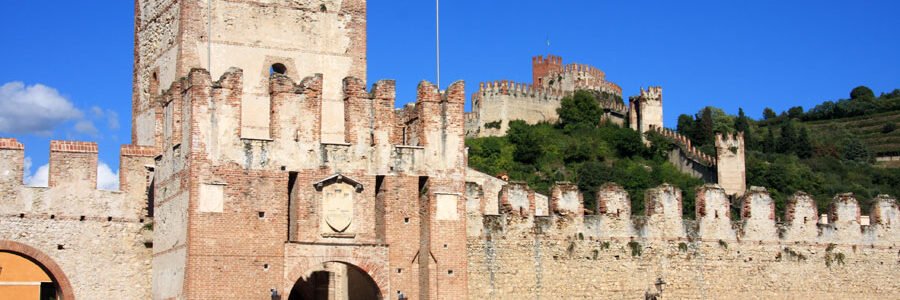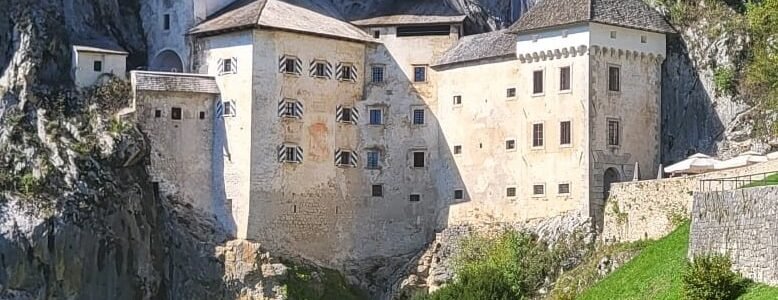A Guide to Slovenia’s Wine Regions
Slovenia has three major wine regions: Primorska in the west, Podravje in the northeast, and Posavje in the southeast. Each area is distinct in climate, grape varieties, and winemaking approach. While small in size, Slovenia’s wine culture is well-established and deeply integrated into rural life. Most vineyards are family-owned, and many producers still bottle and sell directly from their farms.
Primorska – Western Region
Primorska borders Italy and has the strongest international presence. It includes four sub-regions: Goriška Brda, Vipava Valley, Karst, and Slovenian Istria.
Goriška Brda – Cross-Border Tradition
Goriška Brda is located right on the Italian border and is best known for Rebula (Ribolla Gialla), Merlot, and Cabernet Sauvignon. Vineyards are densely planted on steep hillsides, often terraced. Wineries here tend to be small, with tasting rooms located in private homes or traditional cellars. Wines are typically dry, structured, and influenced by both Alpine and Mediterranean climates.
Vipava Valley – Wind and White Grapes
The Vipava Valley sits between mountains and is shaped by strong winds like the Bora. Zelen and Pinela are local specialties, complemented by Sauvignon Blanc, Welschriesling, and Chardonnay. Wines here are fresh, slightly herbal, with balanced acidity and mineral notes.
Karst – Teran and Red Soil
Karst is a limestone plateau with iron-rich red soil. The signature wine is Teran, made from Refosco grapes. It’s deeply colored, high in acidity, and often served with cured meats. Other notable grapes include Vitovska and Malvasia. Cellars are simple, tastings informal, and food is usually part of the visit.
Slovenian Istria – Coastal Balance
Slovenian Istria produces Refošk (Refosco), Malvazija (Malvasia), and increasingly Syrah and Cabernet Franc. These wines are medium-bodied, fruit-forward, and usually well paired with seafood and pasta dishes. The climate is warm and coastal, and vineyards often border olive groves.
Podravje – Northeastern Region
Podravje is Slovenia’s largest wine region and focuses mostly on white wines. It includes Štajerska and Prekmurje.
Štajerska – Styrian Hills
Štajerska is known for Sauvignon Blanc, Laški Rizling (Welschriesling), and Šipon (Furmint). Wines are typically aromatic, light to medium-bodied, and high in acidity. The terrain is hilly, and many growers still harvest by hand.
Prekmurje – Borderland Simplicity
In Prekmurje, close to the Hungarian border, wines are softer in style. Sparkling wines and dessert wines are also made here. Many farms still sell wine directly in liter bottles, unfiltered and intended for quick consumption.
If you’re traveling from Italy and looking to explore Slovenian wine regions without a rental car, a transfer from Venice to Ljubljana Airport can be a convenient starting point.
Posavje – Southeastern Region and the least commercial. It is divided into Dolenjska, Bizeljsko, and Bela Krajina.
Dolenjska – Everyday Red
Dolenjska is known for Cviček, a light red blend with low alcohol and noticeable acidity. It’s made from both red and white grapes and usually consumed young. Locals drink it with sausages, sauerkraut, and simple home-cooked food. The region focuses almost entirely on Cviček, which remains a strong part of local tradition. . It’s made from both red and white grapes and usually consumed young. Locals drink it with sausages, sauerkraut, and simple home-cooked food.
Bizeljsko – Cool Cellars and Sparkling Wine
Bizeljsko has cellars called repnice, dug into sand hills, used for aging and storing wine. It produces both white and red wines, including sparkling. Varieties include Laški Rizling, Rumeni Plavec, and Blaufränkisch. Small-scale farms dominate. , dug into sand hills, used for aging and storing wine. It produces both white and red wines, including sparkling. Small-scale farms dominate.
Bela Krajina – Borderland Whites
Bela Krajina is located near the Croatian border and offers fresh, drinkable whites and some lighter reds. Common grapes include Kraljevina, Sauvignon Blanc, and Modra Frankinja. Tourism is limited, and tastings often happen informally. and offers fresh, drinkable whites and some lighter reds. Tourism is limited, and tastings often happen informally.
Getting Around – Travel and Transfers
Travel between wine regions is fairly straightforward by car, but organized transfers are useful when coming from abroad.
Practical details like wine road maps, tasting events, or vineyard stays are available on the official Slovenia tourism site, without needing to plan weeks in advance.
Conclusion
Slovenia doesn’t market its wine culture aggressively, but the quality is consistent and improving. What stands out is how integrated wine is into everyday life. There’s less formality and more hospitality. You’re likely to be served a glass by someone who grew the grapes, bottled the wine, and lives just up the hill.
A Guide to Slovenia Wine Regions
Slovenia may be small, but its wine story runs deep. From the rolling hills of Brda to the cooler vineyards of Štajerska, each region offers something distinct—flavors shaped by soil, sun, and generations of quiet craft. Wine here isn’t a product—it’s part of the landscape.
Travelers often begin with a transfer from Ljubljana Airport to Trieste or Klagenfurt, combining entry points into Central Europe with access to Slovenia’s hidden cellar doors and hillside tastings just beyond the usual routes.
- Start planning your wine-themed escape
- From airport to vineyard via Venice
- An easy route to Brda and coastal cellars
- Connect eastern terroirs from Budapest
- Northbound travel into Alpine wine country
- From flights to fine reds via Verona
Slovenian wine is best tasted at the source
Each region has its rhythm. Goriška Brda brings soft, sunny whites. Vipava Valley adds minerality and character. The Podravje region in the northeast focuses on crisp, aromatic varieties. Wherever you go, winemakers are often the ones pouring your glass—no tours, just real conversations over vineyard views.
- Perfect for travelers who enjoy wine, nature, and small villages
- Ideal as part of a multi-day road trip or day tour
- Most wineries welcome visitors by appointment
- Regional food pairings add depth to every tasting
- Scenic drives and short distances between wine areas
Wine here doesn’t follow trends—it follows seasons
A guide to Slovenia wine regions leads you into quiet hills and honest flavors
For official wine routes, events, and winery contacts, visit the Official Slovenia Wine Regions Page.
RECENT POSTS
- Munich Between the Lines June 24, 2025
- Beneath Vienna June 24, 2025
- 6 A.M. at Plitvice June 24, 2025





























































Leave a Comment